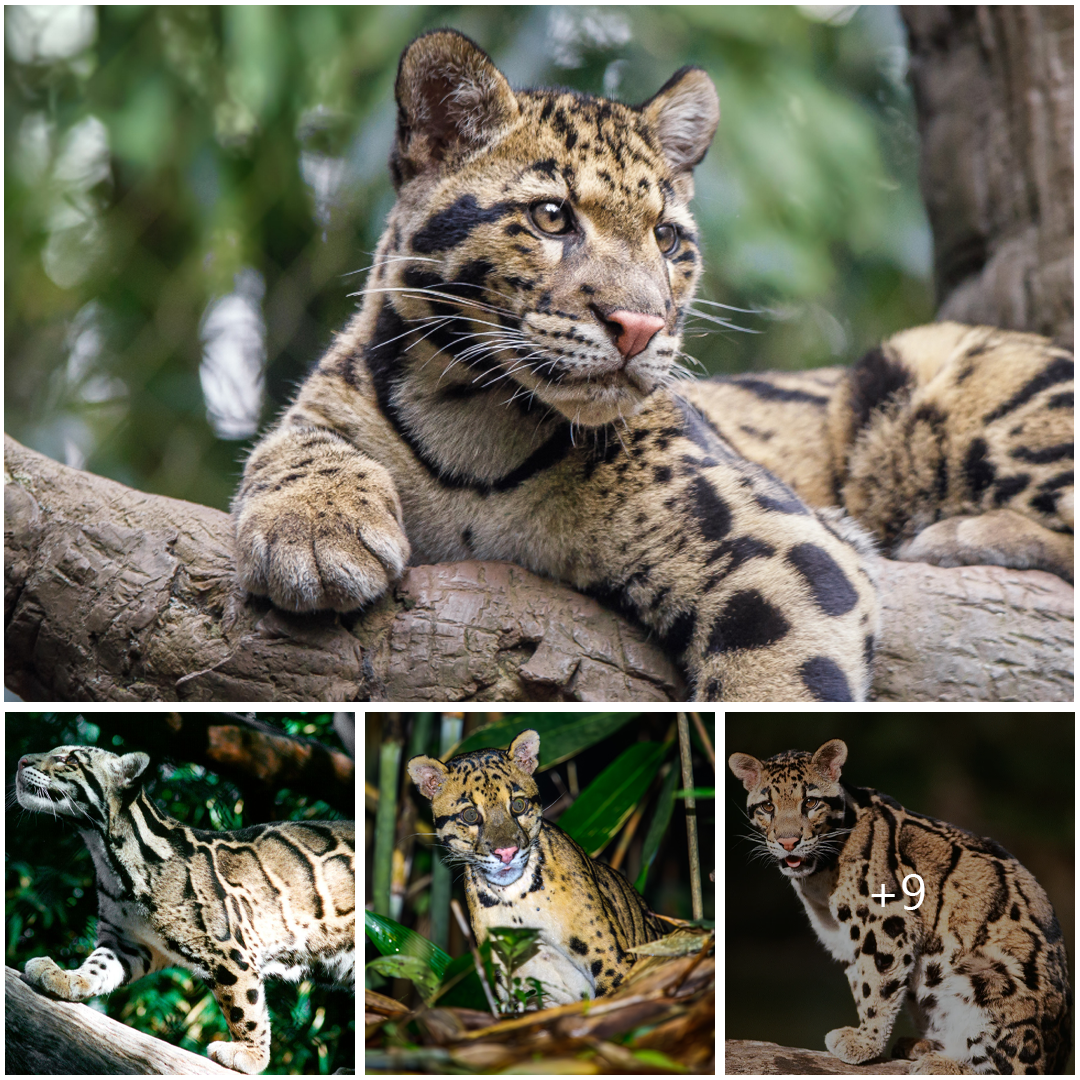
Clouded leopards are a vulnerable species. Although officially protected in most range countries, enforcement in many areas is weak. It is estimated that fewer than 10,000 mature individuals remain in the wild and no single population including more than 1,000 animals. Camera traps are helping scientists better estimate population numbers. The population in human care is around 70 and genetic diversity is presumed to be very low, with most individuals being related as closely as siblings and cousins.
Clouded leopards are victims of habitat destruction and illegal poaching. Their forest habitat is experiencing the world’s fastest rate of deforestation. Clear cutting of forests for use as agricultural lands such as palm oil, is its primary threat, as the clouded leopard requires large tracts of forest for hunting. They are also widely hunted for their teeth, decorative pelt, and for bones for the traditional Asian medicinal trade.
Clouded leopard pelts are the most commonly seen pelts on the illegal market. In 2005, more than eighty clouded leopard pelts were for sale in one market in Myanmar (Burma). Restaurants in Thailand and China that cater to wealthy Asian tourists also feature clouded leopard meat on their menus.
Fewer than 10 clouded leopards in the wild have been radio-collared and studied; 90 percent of what is known about clouded leopards comes from research on captive populations. Much of the research involves collaborations between the Smithsonian’s National Zoo, Khao Kheow Open Zoo in Thailand, The Zoological Parks Organization of Thailand and Nashville Zoo.
Biologists traditionally divided clouded leopards into four regional subspecies. In late 2006, a team of scientists including Smithsonian’s National Zoo theriogenologist JoGayle Howard, found genetic evidence of two distinct species of clouded leopards. It is estimated that the two forms diverged about 1.4 million years ago. The new Sumatra/Borneo species has the common name of Sundaland Clouded Leopard and its scientific name is Neofelis diardi.
There is evidence that this species will be further divided into two distinct subspecies representing their origin: Neofelis diardi borneensis on the island of Borneo; Neofelis diardi sumatrensis on the island of Sumatra. This species is separate from Neofelis nebulosa, which retains three subspecies: N. n. brachyuras on the island of Taiwan (believed extinct in the wild); N. n. macrosceloides occupying northeast India, Nepal, Sikkim and Bhutan; N. n. nebulosa of southeast Asia and China. This is the type on the Zoo’s Asia Trail.





